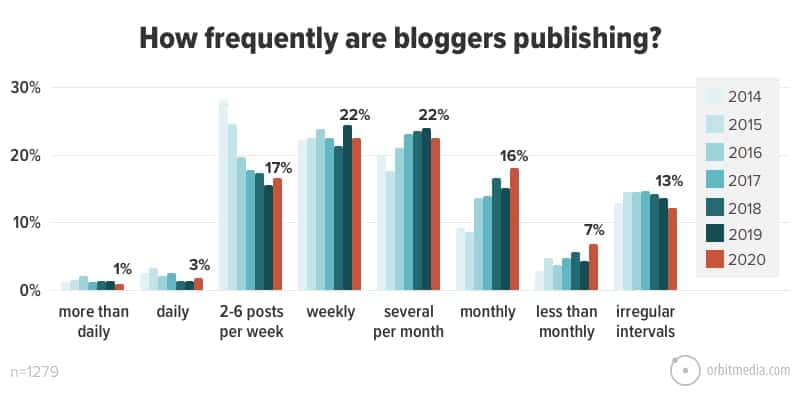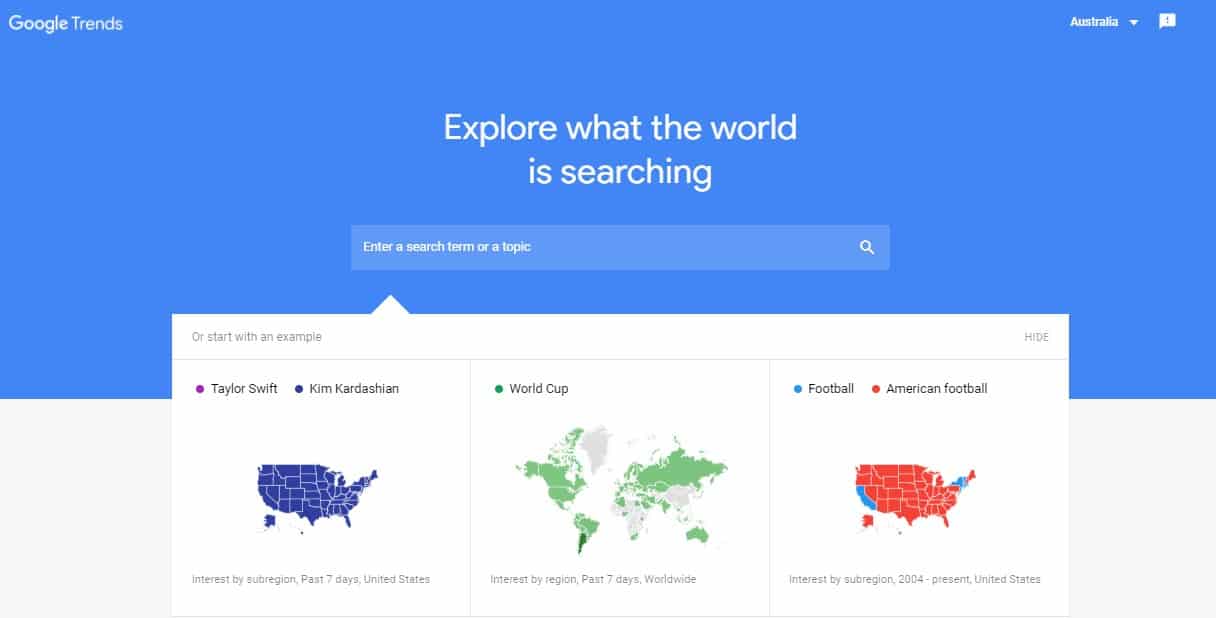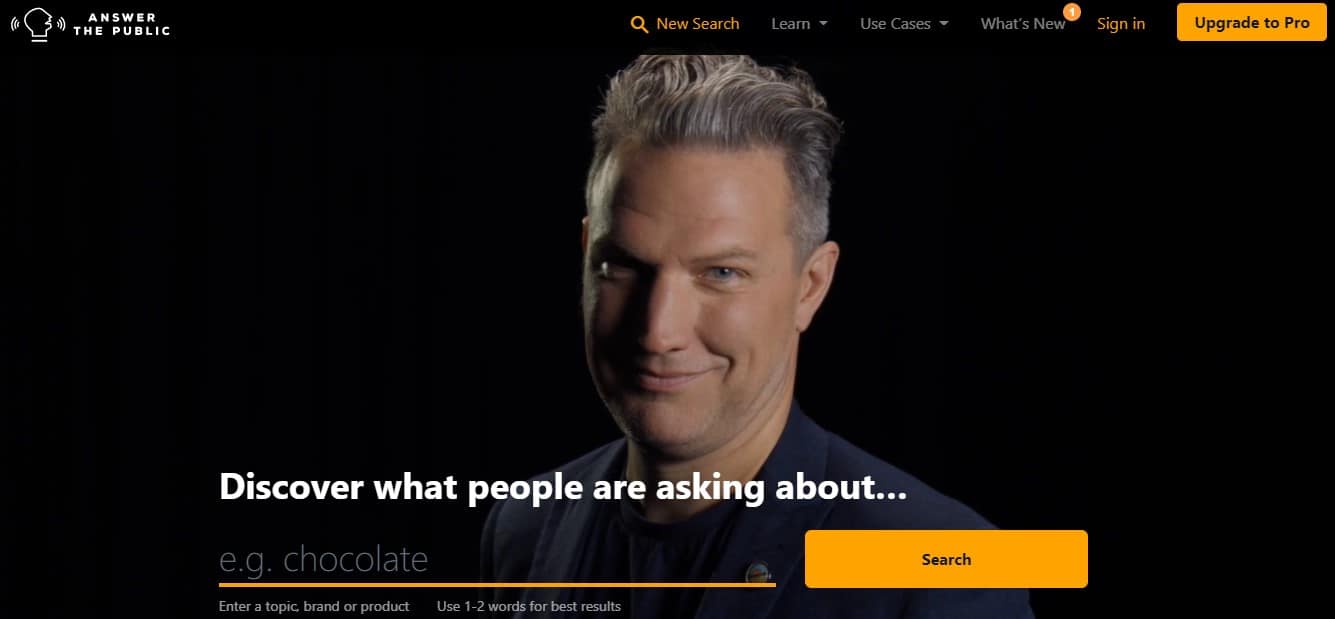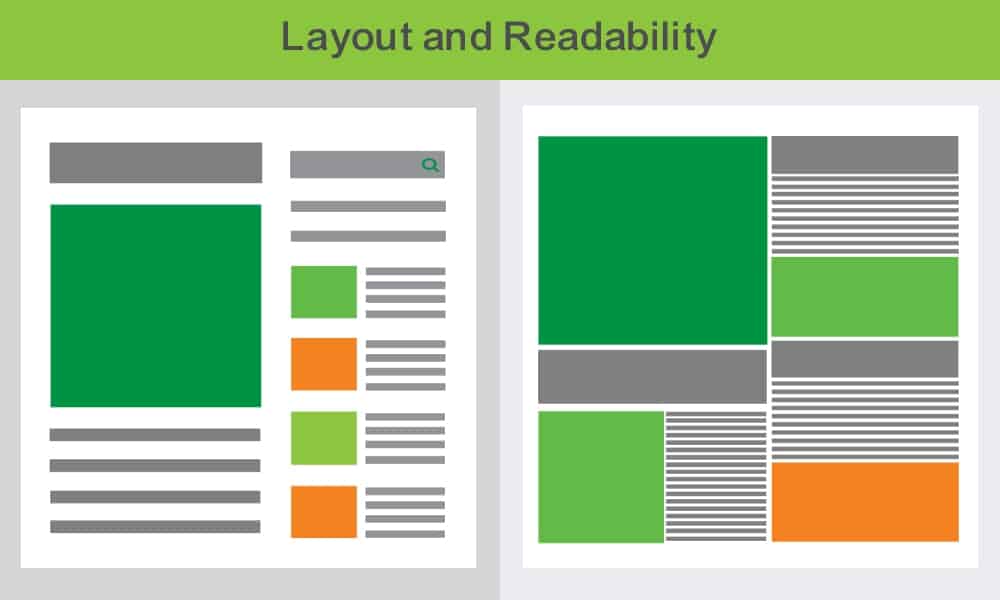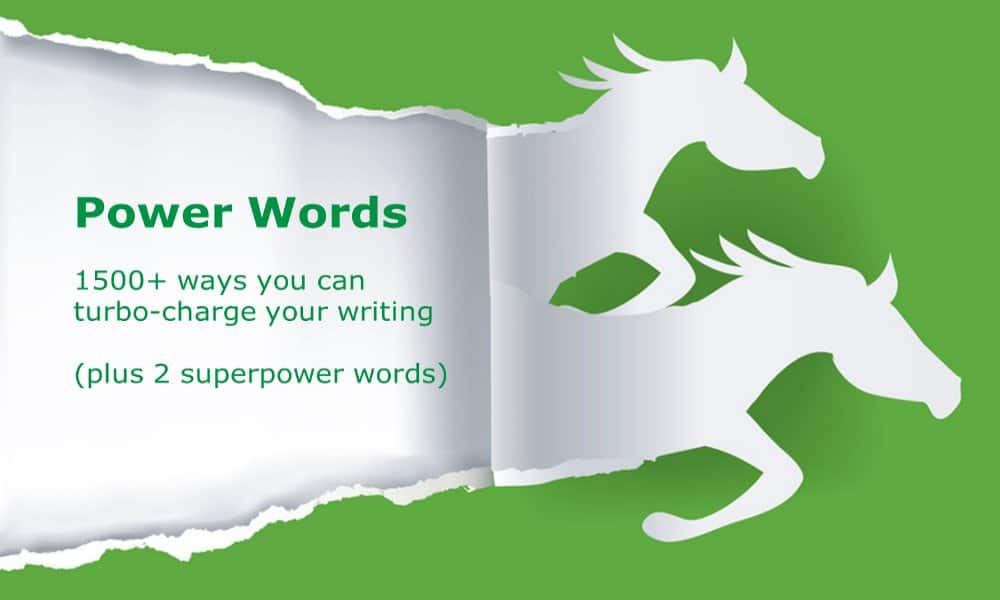So you’re writing a blog. You probably want to improve SEO, or to build brand authority, or both. Here are our top ten blogging tips so you can get more value out of the time you invest in your blog content.
1. Write about topics that are of interest to your audience, not to you
It’s easy to write about what you care about – but what do your customers care about?
Photographers and videographers care about how to set up studio lighting; which camera to use; the editing process.
People buying the services of photographers and videographers don’t.
They care about what they should wear to look good on camera. How to speak to camera and whether you can make them look better. How you’ll handle an outdoor location if there’s wind or rain.
Write about the things that matter to your customers, not the things that matter to you. If you don’t know what matters to your customers, ask them!
2. Write original content
You could simply outsource your blog. There are plenty of people who will do online research and write a post which summarises the main points. But that’s not going to help much.
It doesn’t help your audience – your target market. It doesn’t give them anything new. So why would they read your blog?
Everybody likes something new!

Instead, blog about your own opinions and experiences. Answer specific questions clients ask you. Tell the stories of particular jobs you’ve undertaken. Talk about challenges you’ve faced, and how you’ve overcome them. And if you have a strong opinion about something in your industry, don’t be afraid to share it. (Just don’t criticise people who have other opinions. Keep the moral high ground.)
You can still outsource – but you have to do it differently. Don’t just hand over your blog and forget it. Outsource all the copy editing, image optimisation, publishing and SEO work, but stay involved in the original content idea. (Try our voice-to-blog service for a way to do this which doesn’t suck up all your time.)
3. Write regularly
Orbit Media run an annual blogging survey. Here’s what they had to say about blogging frequency in 2020.
Less than half of bloggers publish every week. A third publish once a month or less. And remember, this survey includes professional bloggers and companies with marketing teams.
Blogging regularly does not mean blogging daily.
It means blogging to a consistent schedule. Once a week. Once every two weeks. Once a month. Whatever works for you – but keep it happening.
A single blog post is not going to change the world, or your business. But a steadily growing blog can make a difference. And regularity makes you look consistent and reliable.
If you’re just starting out, you might want to smash out three to five posts and backdate some. That way your blog doesn’t look brand new.
If you’re the kind of person who blogs in fits and starts, try to get ahead. Then schedule your posts to publish on a regular schedule.
4. Length of your article
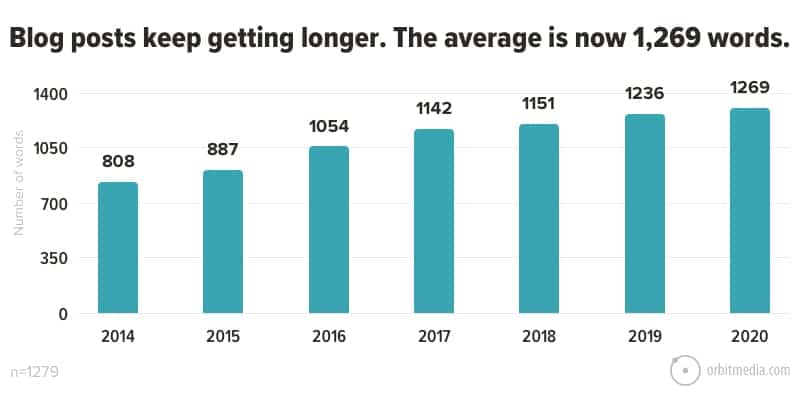
Interestingly, blog posts are getting on average longer every year. There are studies into the length of articles which appear on page one of Google. General consensus is at least 1000 words. Hubspot suggest over 2,000 words for the best chance of ranking!
In support of this argument, here’s Jay Baer of Convince and Convert
“Blogging was once an online newspaper: lots of short articles, published frequently. Now, it’s an online magazine: a few longer articles published less often.”
On the other hand, think about user experience. Let’s take recipe posts as an example. When I want to make lemon meringue pie, I want to make lemon meringue pie. I don’t want to know about the weather when you wrote the blog post, or the number of times you tested this recipe on friends, or the fact that you love lemon meringue pie so much you eat it for breakfast.
The moral? Don’t fill out your post just to hit some magic length. Your blog post should be as long as you need for that specific topic and no more. (My posts are normally between seven hundred and fifteen hundred words. But here’s a very short one!)
5. Use images and multimedia
There’s a reason kids’ books have pictures. Kids don’t like to read.
Neither do many adults.
Even the ones who do like reading often find pictures break things up. They add life and interest to the page. And sometimes, diagrams explain things much better than words could.
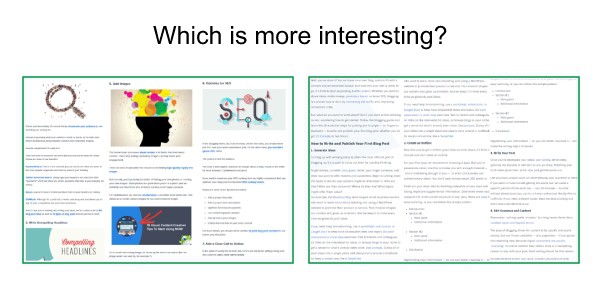
Rule of thumb? One image for every 150 to 200 words.
Note that you don’t have to space images evenly through the post. Put them in the most logical place. Then use bullet points or headings or highlighted text to break up any long areas without an image.
Don’t stop at images either. Try video and audio. Animated gifs.
Humans listened and watched long before the invention of writing. It’s hard-wired. A bit of multimedia can add a lot of value.
This result shows how images and multimedia can help your blog drive results.
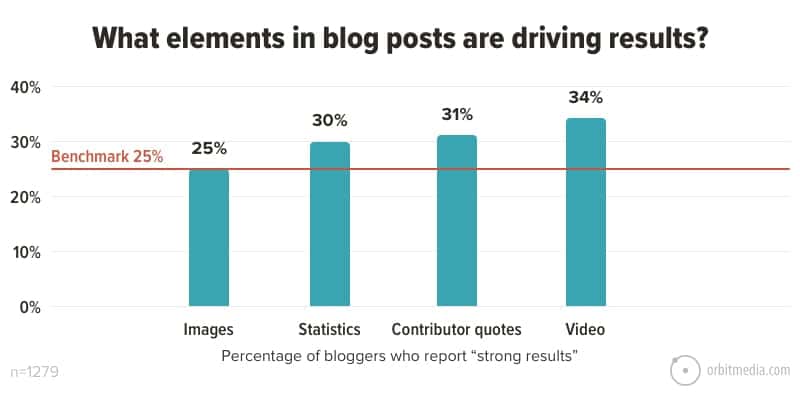
6. Work on the subject line of your blog
People won’t read the blog if the headline doesn’t pull them in.
Orbit Media’s survey of blogs found that bloggers who tested 10+ headlines were 84% more likely to report strong results. That’s a big benefit from working on a line or two of copy!
My preferred tool for this is the Coschedule headline analyzer. Just remember that it’s an automated tool. It doesn’t know everything and the final decision is yours. But it can spur creativity. (And if you’re still stuck for inspiration, our master list of 1500+ power words will trigger some ideas!)
7. Optimise your blog
Pick a keyword, research a keyword, and optimise the whole blog for it.
If you’re writing original content and sharing your experience, there may not always be an obvious keyword with significant traffic – but you can still optimise! When there are fewer articles about a topic, it’s easier to rank on the first page of search results. There might be fewer searches, but you’re more likely to appear in search results. You can improve that chance further by optimising.
And of course, for popular subjects, you have to optimise if you want to show up in search results.
Orbit Media again – look how important keyword research is to your results.
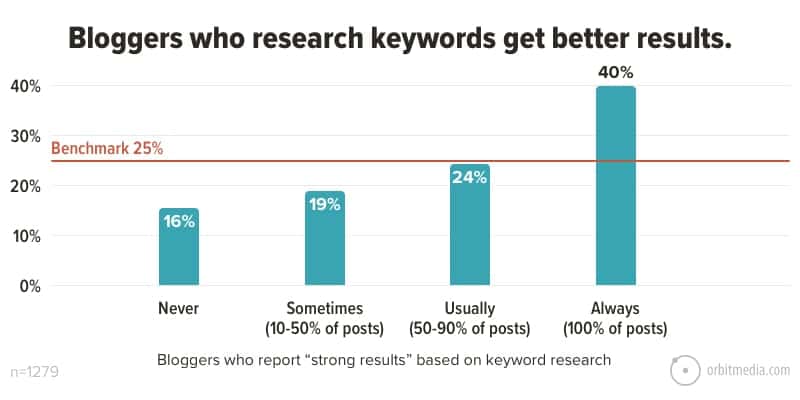
Here are some tools you could use:
1. Google Trends
You need to have an idea what keyword might work. Then find out how much search volume there is and whether that volume is growing or decreasing.
2. Answer The Public
Not so great for really niche topics, but it does give you plenty of ideas.
3. Google Ads Keyword Planner
Yes, it’s designed to help you choose keywords for ads, but it’s a great way to get related ideas if you’ve got one keyword you start with. And to compare search volumes. (You need to have a Google Ads account to use this tool.)
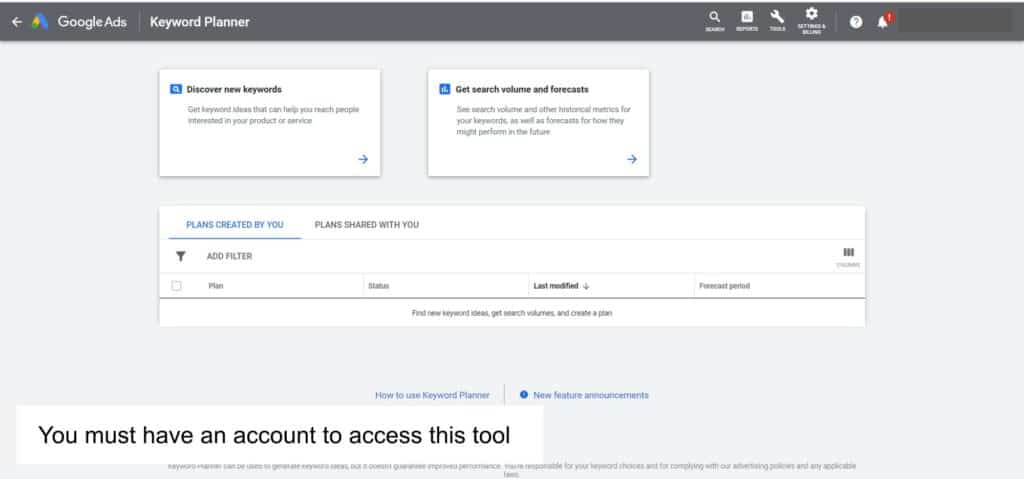
4. Ahrefs
One of our favourite tools, although you need an account. Not only do you get information about how many people are searching for a specific keyword, you also get an estimate of how hard it will be to rank.

8. Promote your blogs
‘Build it and they will come.’ A famous line (and a mis-quote, actually) – but it only happens like that in the movies. If nobody knows you published a blog post, nobody’s going to come looking for it.
As a bare minimum, promote your post on your own social media and in an email newsletter to your existing clients and contacts. Remember, they’re not all rushing back to your website every week to check what’s new. Send them an email and tell them there’s something new to see.
If you’ve quoted anybody in your article, tell them you quoted them. If they’ve contributed a comment or information, tell them when you publish. Ask them to share. Even if you don’t know them, you can still let them know you were impressed enough to quote them.
You can also use paid promotion for really strong posts. Probably not at first, but once you know the post brings traffic, and brings traffic which converts, you might want to look at paid options.
9. Review and update your best posts
Nothing stays the same for ever. Your good posts will get outdated. Even if they don’t, someone else may come along and write a better post. It’s always worth reviewing.
This is especially true for statistics, reports and lists. For example, we have a post listing the top Australian business directories you might want to list in. Directories get more popular. Others die. New ones appear. We update the post once a year so it stays useful. And because it’s still up-to-date and useful, Google still show it on page one.
10. Consider your Call to Action

Maybe you’re blogging and you’re getting some traffic, but no more leads or enquiries. That’s not helping your bottom line
You want people to visit, but you want them to do more. Subscribe to your newsletter, or contact you with an enquiry. So aim for a call to action at the end of every single blog post – or at some point within the post.
What might that call to action be?
- A link to your most relevant service. (For example, our voice-to-blog service takes all the pain out of blogging. We make sure the tips on this page are followed, so you don’t have the job of implementing them.)
- You could offer a printable PDF with one page summary or checklist of everything that’s in the blog.
- You could offer a related download. (For instance, this power words list is a great option for anyone who wants to blog.)
- Sometimes, you just want people to contact you. So put in a phone number or a link to a contact form. Or both!
Whatever you do, ask your visitors to engage. If you don’t, they don’t know what to do next. Make it easy for them.
So those are some tips for how you can blog more successfully.
What are you going to do next? You can take them all on board and blog yourself, or you could get some help.
Why not try out our Voice-to-Blog service?
At NoBull Marketing, we’re strong believers in original content. That’s why we designed our service to help you get your original content out there with no hassle!



